The Ford GT is more than just a car—it’s a symbol of American engineering and racing excellence. With its sleek design and powerful performance, the Ford GT has captivated car enthusiasts and collectors for decades. In this article, we’ll dive into 15 surprising facts that reveal the unique design elements and rich legacy that make the Ford GT a true icon in the automotive world. Whether you’re a lifelong fan or new to the legend, these insights will deepen your appreciation for this remarkable machine.
Contents
Inspired by Le Mans

The Ford GT’s design pays homage to the legendary GT40, which etched its name in racing history by defeating Ferrari at the 24 Hours of Le Mans in the 1960s. The low-slung body, wide stance, and aggressive front fascia of the Ford GT are modern interpretations of the classic GT40 design, celebrating its motorsport heritage while incorporating contemporary performance technologies.
Wind Tunnel Perfection

The aerodynamic efficiency of the Ford GT was perfected through extensive wind tunnel testing, a process that refined its shape for optimal downforce and minimal drag. The car’s sleek lines and strategic airflow management ensure that it cuts through the air with minimal resistance, allowing it to achieve higher speeds and better stability, especially at the track.
Carbon Fiber Construction

The modern Ford GT is built on a carbon fiber monocoque, a lightweight yet incredibly strong structure that forms the core of the car. This advanced material not only reduces weight but also enhances the car’s rigidity, contributing to its agility and performance. The use of carbon fiber is a hallmark of high-end supercars, and in the Ford GT, it underscores the car’s commitment to cutting-edge design and engineering.
Butterfly Doors

The Ford GT’s butterfly doors are a distinctive design feature that enhances both form and function. These doors, which open upward and outward, improve aerodynamics by reducing the car’s frontal area when closed. Additionally, they make it easier to enter and exit the vehicle, even in tight spaces, despite the car’s low profile—a testament to the GT’s blend of style and practicality.
Heritage Edition

The Ford GT Heritage Edition models are a nostalgic nod to the iconic liveries of the original GT40 race cars. These special editions feature classic color schemes and design elements that mirror the look of the cars that dominated Le Mans in the 1960s. The Heritage Edition connects the GT’s modern incarnation with its storied past, allowing enthusiasts to own a piece of automotive history.
NACA Duct
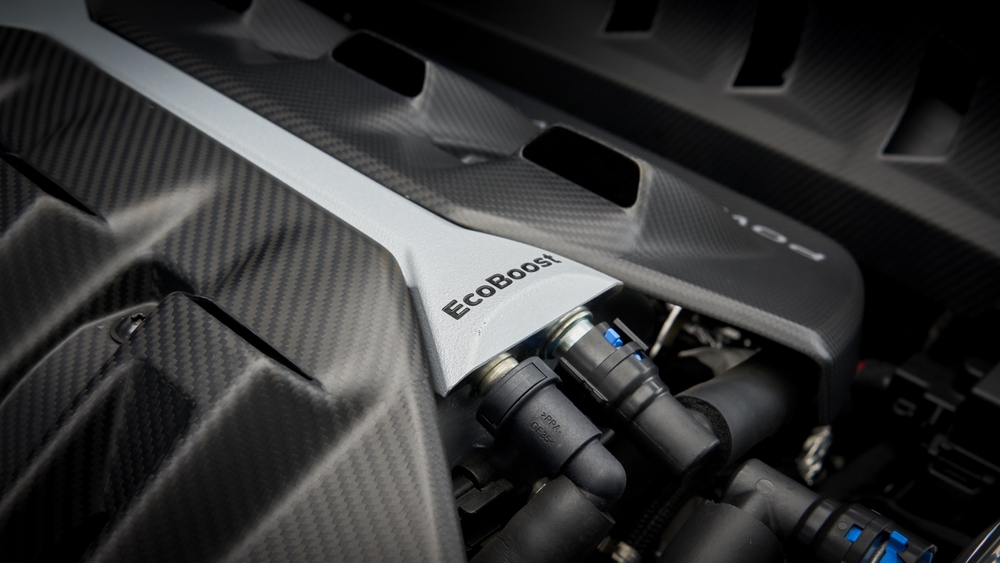
The inclusion of NACA ducts on the hood of the Ford GT is a nod to classic aerodynamic principles. These ducts are designed to efficiently channel air into the engine bay, aiding in cooling without adding significant drag. This subtle yet effective feature reflects the GT’s focus on performance, combining traditional aerodynamic solutions with modern technology.
Track-Mode Lowering

When the Ford GT is switched to Track mode, its suspension lowers by almost 2 inches, dramatically altering its stance and lowering its center of gravity. This change enhances the car’s handling and stability, particularly during high-speed cornering, making it an even more formidable performer on the racetrack. The ability to adjust ride height on the fly is a testament to the GT’s advanced engineering.
Exhaust Placement
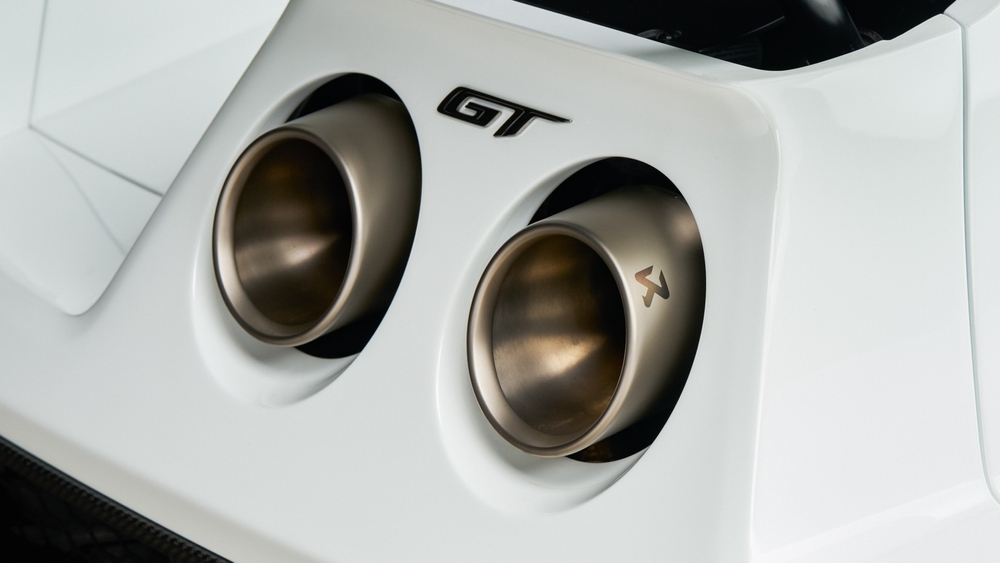
The Ford GT’s exhaust system is positioned high on the rear fascia, a design choice that serves multiple purposes. By placing the exhaust outlets higher, the designers reduced the amount of piping needed, thereby saving weight. This placement also contributes to better airflow management around the rear of the car, improving overall aerodynamic efficiency.
Limited Production

With only 1,350 units of the second-generation Ford GT produced, this supercar is as exclusive as it is stunning. The limited production run ensures that each GT is a rare and highly coveted collector’s item, enhancing its appeal and preserving its value over time. This exclusivity is part of what makes the Ford GT an icon in the automotive world.
Engine Placement

The mid-engine layout of the Ford GT is a critical design feature that optimizes weight distribution and handling. By placing the engine behind the driver, the GT achieves a near-perfect balance, which enhances its agility and responsiveness on both the road and track. This configuration is a hallmark of high-performance sports cars and is integral to the GT’s dynamic driving experience.
Lightweight Wheels
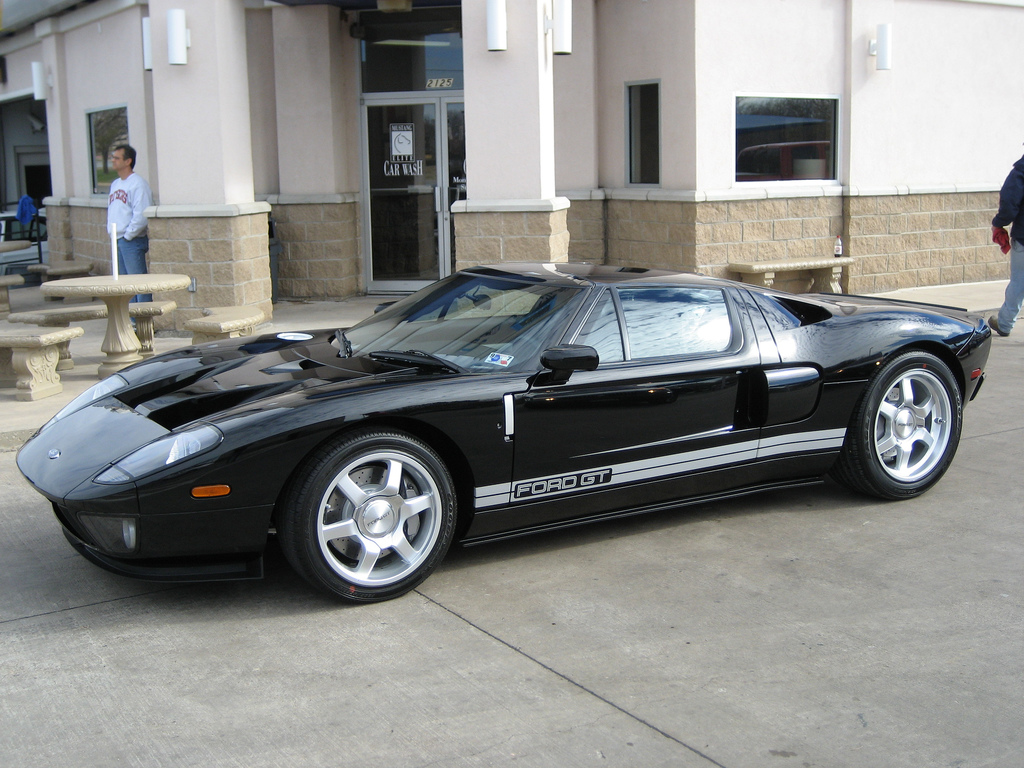
The optional carbon fiber wheels available for the Ford GT reduce unsprung weight, which improves the car’s handling and ride quality. Lighter wheels allow for quicker acceleration and better braking performance, making the GT even more capable on the track. This feature highlights the GT’s focus on maximizing performance through advanced materials.
Race-Inspired Interior
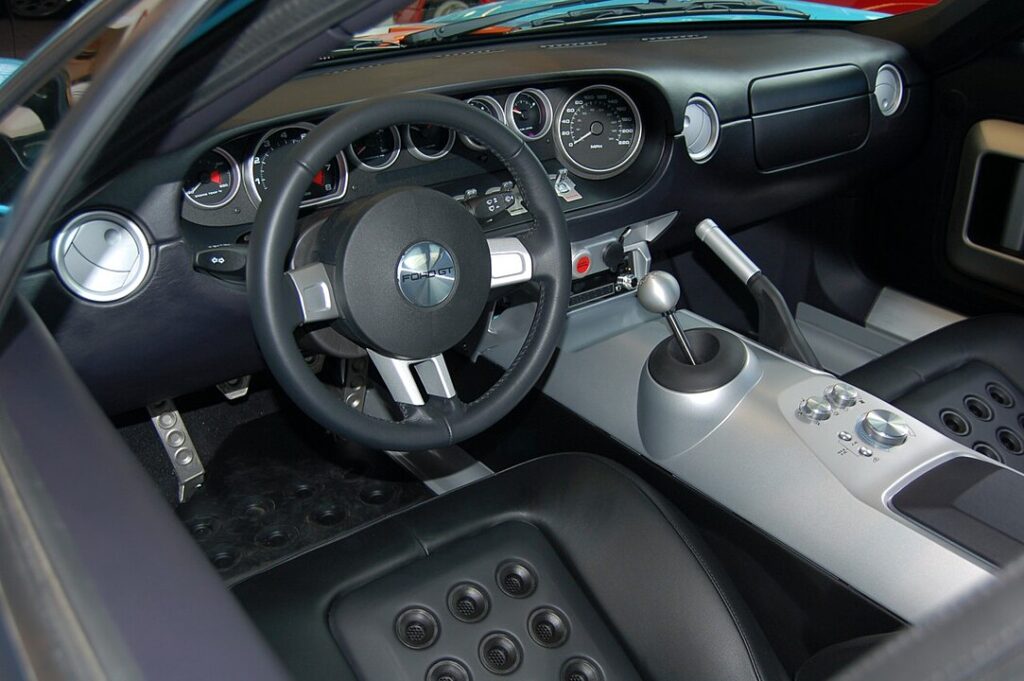
The Ford GT’s interior is designed with the driver in mind, drawing inspiration from race car cockpits. The controls are minimalist and intuitively placed, ensuring that the driver can focus on the road or track ahead. The lack of unnecessary features in the cabin reflects the GT’s pure performance ethos, where every element serves a purpose.
No Adjustable Seats
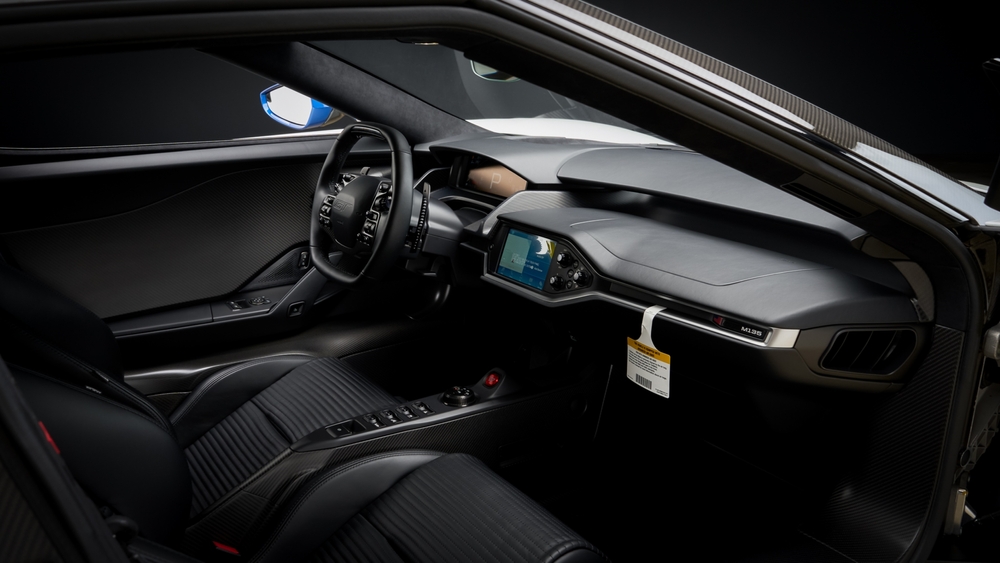
To keep the driver as close to the car’s center as possible, the Ford GT’s seats are fixed in place, with the pedals and steering wheel being adjustable instead. This unique design choice reduces weight and ensures that the driver remains perfectly positioned for optimal control. It’s a feature that underscores the GT’s commitment to performance and precision.
Aero Channels

The Ford GT’s body incorporates hidden aero channels that direct air to the rear wing and radiators, enhancing both cooling and stability. These channels are seamlessly integrated into the car’s design, reflecting the GT’s focus on functional aesthetics. By managing airflow effectively, the GT maintains optimal performance under a variety of driving conditions.
Tribute to Innovation

Every aspect of the Ford GT’s design is a tribute to the innovation and success of the original GT40. From its advanced aerodynamics to its use of cutting-edge materials, the GT blends classic design cues with modern technology to create a car that is both a celebration of the past and a vision of the future. This fusion of old and new is what makes the Ford GT an enduring icon in the world of supercars.
This article originally appeared in MyCarMakesNoise.
More from MyCarMakesNoise
15 Iconic Car Designs That Influenced the Industry

Throughout the history of the automotive industry, certain car designs have stood out for their groundbreaking impact on the market and culture. These iconic vehicles defined their eras and set new benchmarks in performance, aesthetics, and technology. Read More
10 Amazing Details About the Chevrolet Corvette

The Chevrolet Corvette has captivated car enthusiasts for decades with its blend of cutting-edge technology, sleek design, and high-performance capabilities. Since its debut in 1953, the Corvette has evolved into an iconic sports car, renowned for pushing the boundaries of automotive innovation. Read More
10 Extreme Off-Road Vehicle Mods for Adventurous Drivers

Standard vehicles often fail to provide the necessary durability and performance for those who crave adventure and the thrill of the unbeaten path. Extreme off-road modifications transform everyday vehicles into powerful machines capable of tackling the most challenging terrains. Read More














